6 Best Cable Machine Shoulder Exercises (with Pictures!)
In cases where no weights are available but a shoulder workout is overdue, the cable machine provides quite a number of options.
Because of the adjustability and versatility of the standard cable machine, targeting all three individual heads of the deltoid muscles is no issue at all.
Examples include the cable overhead press, cable upright rows, face pulls, cable lateral raises, cable front raises, and cable rear delt flyes.
What are Cable Machine Shoulder Exercises?
As one can guess, cable machine shoulder exercises are simply deltoid-focused resistance exercises that make use of a cable machine.
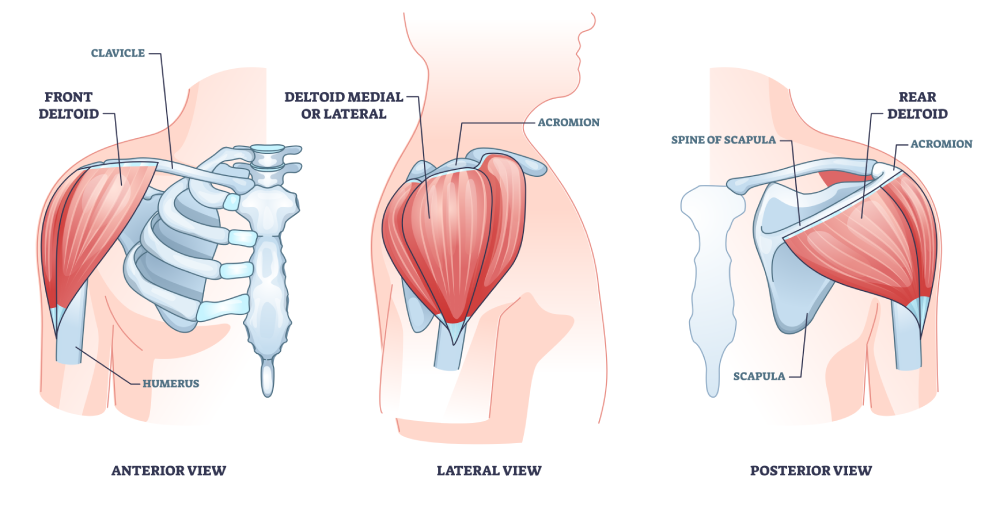
Generally, these exercises are push or pressing movements, and will emphasize one of the three deltoid heads more than the remaining two.
Benefits of Using Cable Machines for Shoulder-based Exercises
Apart from building mass and strength in the deltoids, cable shoulder exercises benefit from their machine-based nature. Machine-based exercises are characterized by their lesser risk of injury, a greater opportunity for time under tension and the capacity to create unique angles of resistance.

In addition, many free weight exercises have a cable machine counterpart, allowing for substitution to freely take place if so desired.
Furthermore, the majority of cable deltoid exercises can be modified by changing the position of the cable pulley or the specific handle used. Such versatility lets the lifter switch exercises with a unilateral or bilateral variation, change the sort of grip used, or otherwise alter which muscles are recruited.
Best Cable Machine Shoulder Exercises
1. Cable Overhead Press
For a machine-based variation of what is the quintessential shoulder exercise, look no further than the cable overhead press.
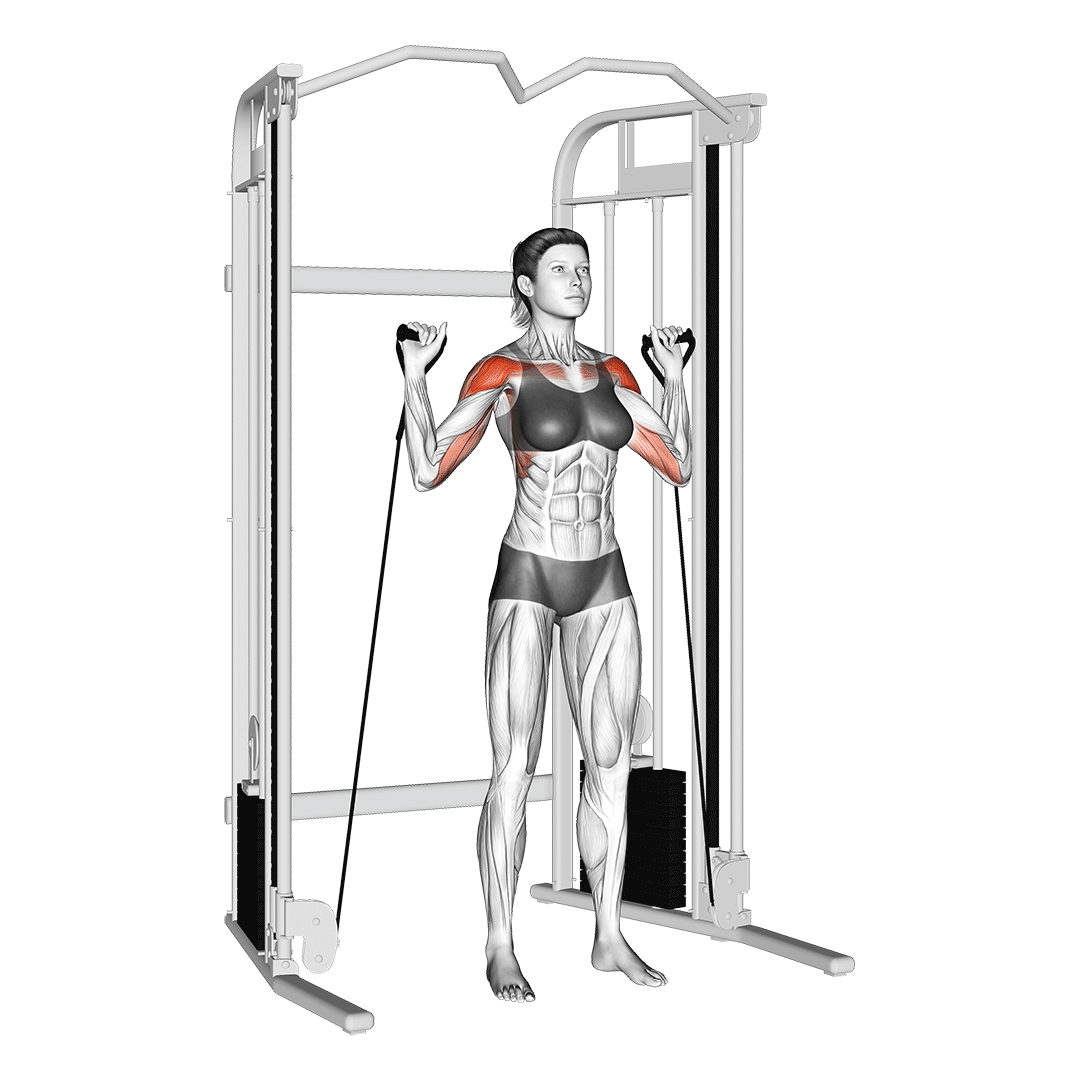
Like its free weight counterpart, the cable shoulder press is a high intensity compound movement involving the lifter extending their arms over their head.
Because performing the exercise with a straight bar may be difficult, most individuals perform the exercise with a pair of single-hand attachments at either side of the body.
Muscles Worked
The cable overhead press will target all three heads of the deltoids in equal measure, as well as the triceps brachii.
Benefits
The cable overhead press is one of the heaviest and most comprehensive shoulder exercises possible on the cable machine.
Not only does the cable shoulder press allow equal emphasis on all three sections of the deltoids, but it also does so in a manner that can be geared towards high resistance or high volume.
In addition, the exercise may be performed in a seated position, or the angle of resistance may be adjusted towards the back or front. Either change in the exercise will allow for greater comfort and a reduced risk of injury.
How-to:
To perform a repetition of the cable overhead press, the lifter will stand within the center of the cable machine, adjusting the pulleys as low to the ground as possible. A pair of single-hand attachments must be affixed to both cables, gripped in the lifter’s hands at either side.
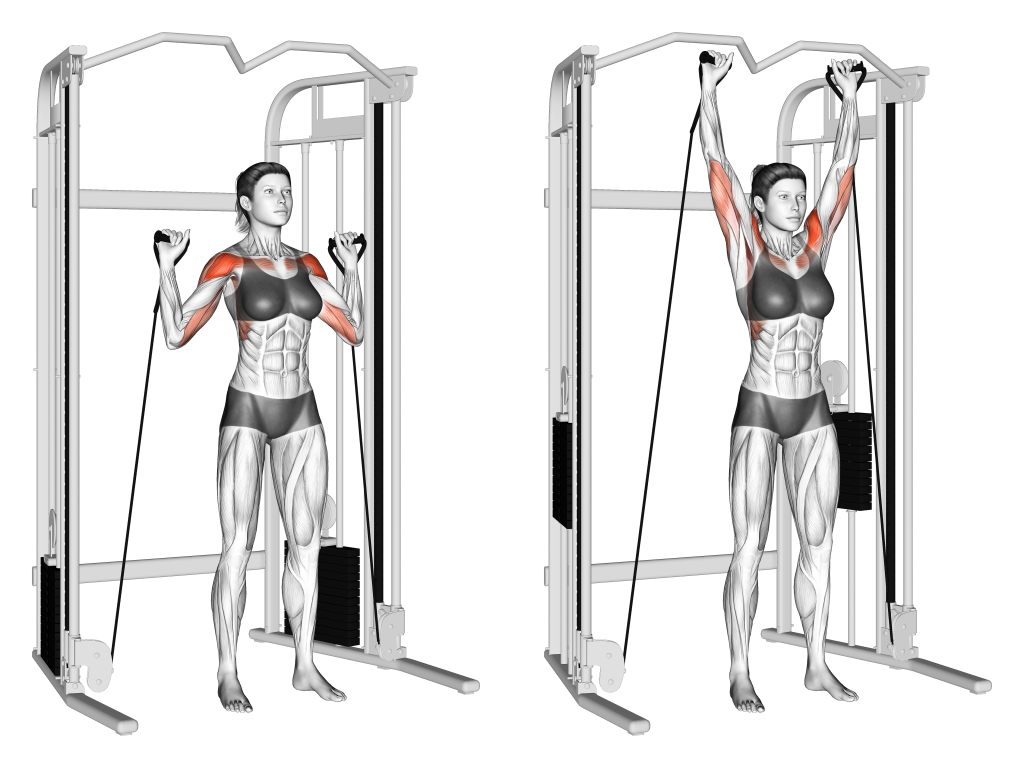
Handles now in hand, the lifter will raise their arms out to the sides and bend at the elbows, pointing the palms forwards. The starting stance must begin with the hands parallel to the sides of the head and the knuckles facing upwards.
Now in the correct stance, the lifter will contract their deltoids and extend their arms upwards until the elbows are nearly locked out.
From this point, the lifter will pause for a moment before slowly lowering their arms back down - thereby completing the repetition.
2. Cable Upright Rows
Unlike other shoulder exercises, upright rows are a pulling exercise that target the muscles of the upper back alongside the deltoids. This can make them difficult to include into a push day workout, but invaluable for a full body or pull day training session.
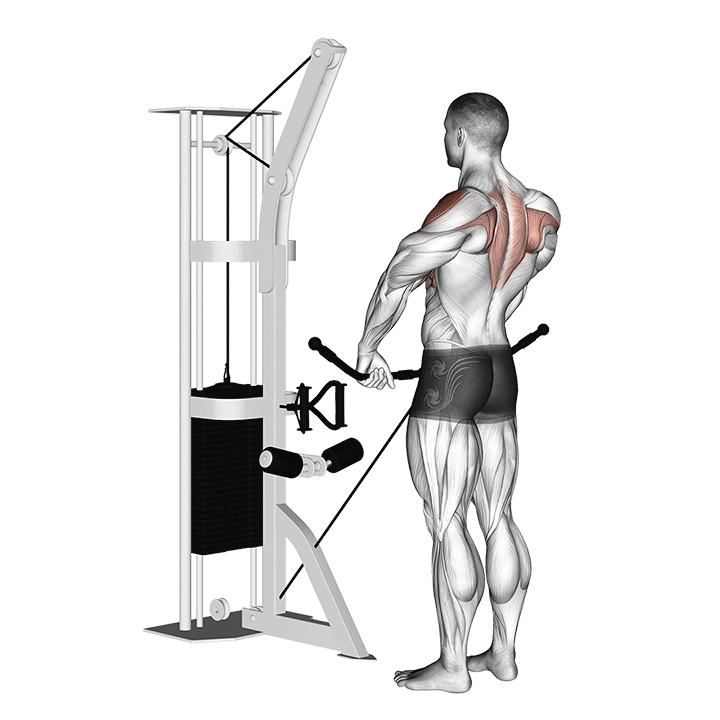
As is the case with other types of row exercises, the cable upright row is a multi-joint exercise most often performed for moderate resistance and moderate volume.
The upright row is occasionally the subject of controversy due to its inherently greater risk of shoulder injury. Because of this risk, it may not be an appropriate exercise for novice lifters or individuals with a history of poor shoulder integrity.
Muscles Worked
Upright cable rows target the trapezius, infraspinatus, teres minor and the deltoids.
Benefits
Although the cable upright row includes many upper back muscles in its recruitment pattern, it is also a particularly effective exercise for targeting the lateral and anterior deltoid heads.
In addition, when performed correctly, the upright row is excellent for reinforcing the shoulder girdle - muscles of the rotator cuff included.
How-to:
To perform a repetition of the cable upright row, the lifter will set the cable pulley as close to the ground as possible, affixing a straight or EZ-curl bar attachment to the cable.
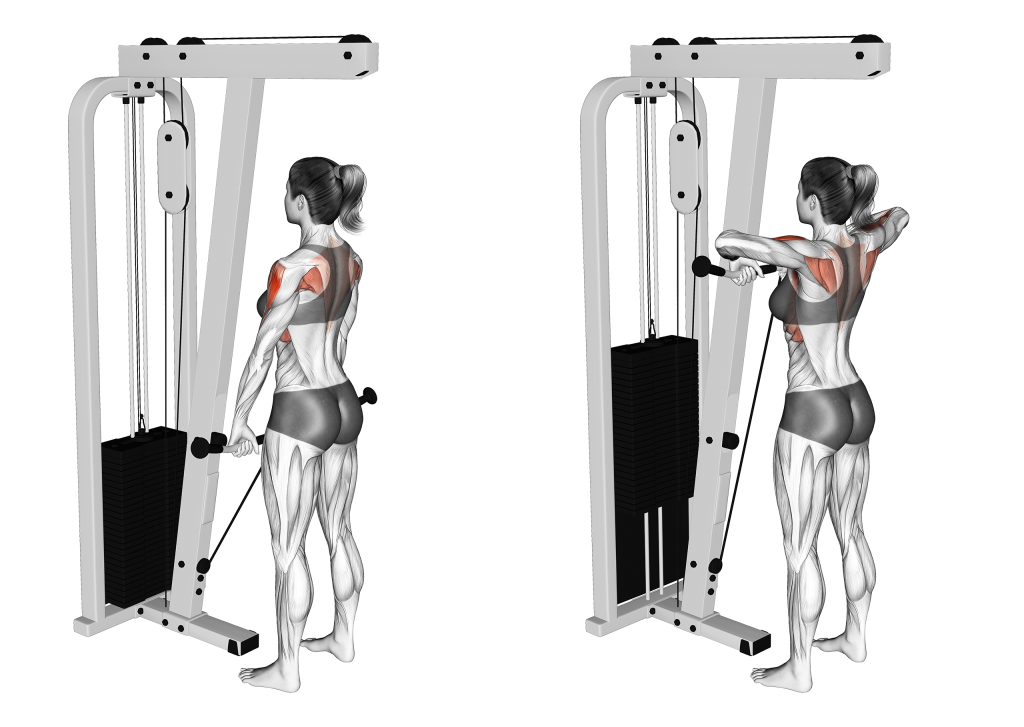
With the cable machine set up appropriately, the lifter will grip the bar in a double overhand grip and stand upright, creating enough distance to maintain tension in the cable.
Beginning the repetition, the lifter will bend their elbows and contract their shoulders, drawing the handle immediately upwards until it is parallel with the clavicles.
Once reaching the apex of the movement, the lifter will then slowly lower the handle back downwards - thereby completing the repetition.
3. Face Pulls
Face pulls are the very definition of a cable machine shoulder exercise, as they are only rarely performed effectively with other types of equipment.
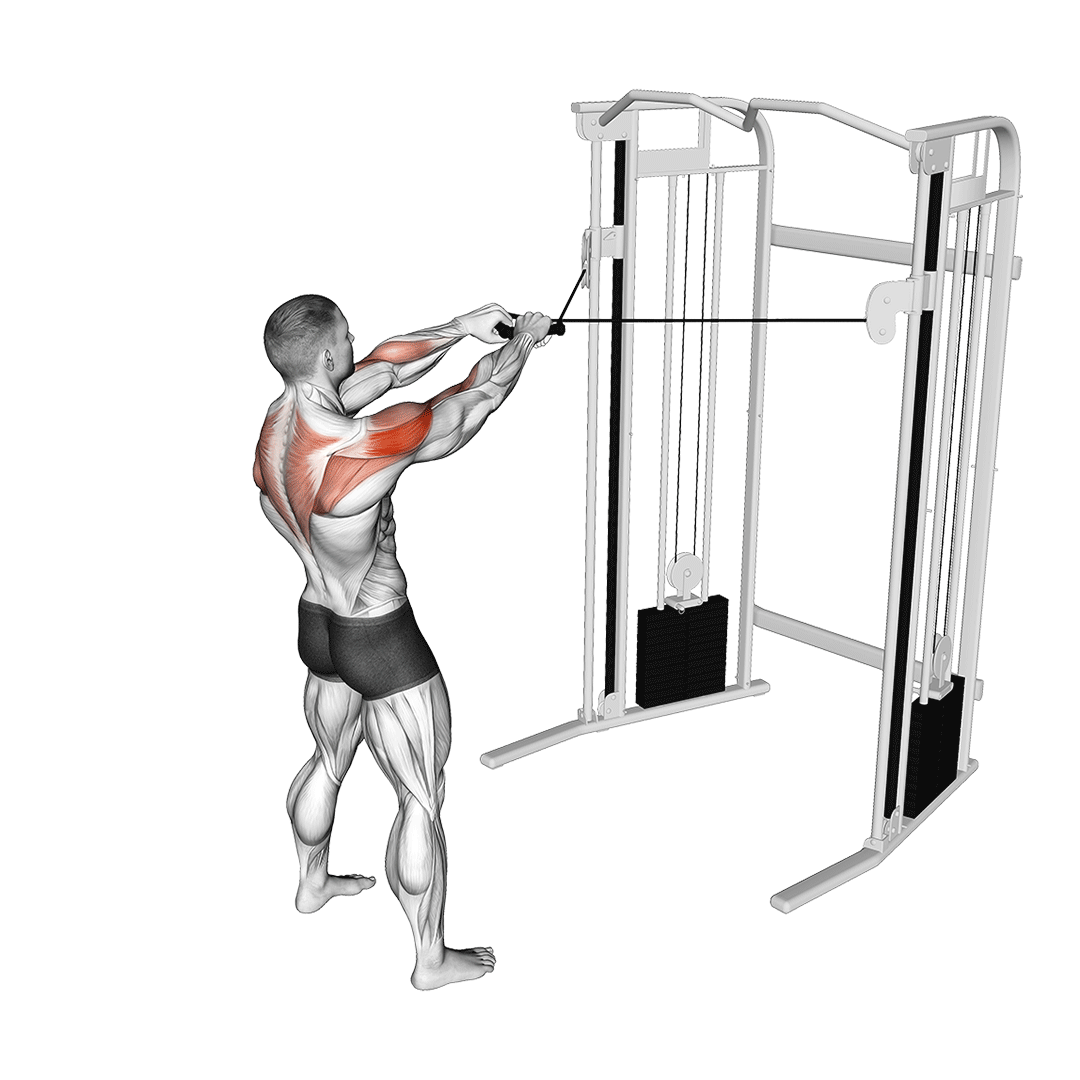
Much like the upright row, face pulls are a compound pulling exercise that will target the muscles of the upper back alongside those of the deltoids and rotator cuff. This makes them excellent for both strengthening the shoulder girdle as a whole, as well as an effective rehabilitation tool in certain contexts.
Muscles Worked
Face pulls work the trapezius, infraspinatus, the elbow flexor muscles of the arms, the teres muscles and the deltoids - specifically the lateral and posterior heads.
Benefits
Face pulls are of particular note for being one of the most effective exercises for the shoulder joint as a whole. When performed with quality over quantity in mind, they are effective for strengthening the rotator cuff, improving upper body posture and correcting deltoid imbalances.
Furthermore, the face pull is quite useful as an accessory movement in pull day workouts, allowing the lifter to “finish off” the muscles of their upper back in a safe manner.
How-to:
To perform a repetition of face pulls, the lifter must set the cable pulley at around the same height as their head, a double-ended rope attachment hooked to it. The chest must remain upright throughout the movement, and the neck aligned with the spine.
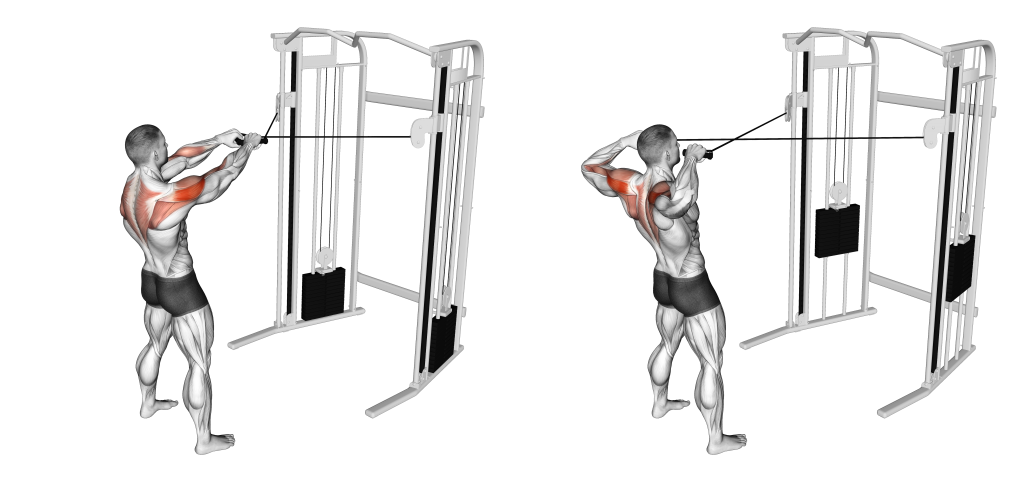
Gripping both ends of the rope and stepping back so as to create tension, the lifter will then draw their elbows out to the sides, pulling the ropes towards their ears. As they do so, they will contract their deltoids and trapezius, retracting the scapula alongside the elbows.
Once the elbows are parallel with the shoulders and the hands at either side of the head, the lifter will slowly reverse the motion to complete the repetition.
4. Cable Lateral Raises
The cable lateral raise is a deltoid isolation exercise mechanically similar to that of the standard lateral raise - only with the added benefit of an adjustable angle of resistance.

Cable lateral raises are of particular note for being highly adjustable as a deltoid isolation exercise, where the position of the lifter can be shifted so as to emphasize different sections of the deltoids.
Muscles Worked
The cable lateral raise solely works the deltoid muscle group. Depending on whether the cable is angled from the front, side or back of the lifter, each respective head is ensuingly emphasized as well.
Benefits
Apart from being adjustable and accessible, cable lateral raises are of note for having a high capacity for volume - making them one of the best accessory movements for muscular hypertrophy of the shoulders.
Other benefits notwithstanding, the lateral raise as an exercise also benefits from most other aspects of the cable machine. This allows the exercise to be performed unilaterally, or even without the use of the hands if so needed.
How-to:
To perform a repetition of cable lateral raises, the lifter must set the cable pulleys at their lowest depth, attaching a pair of single-hand attachments to both cables.
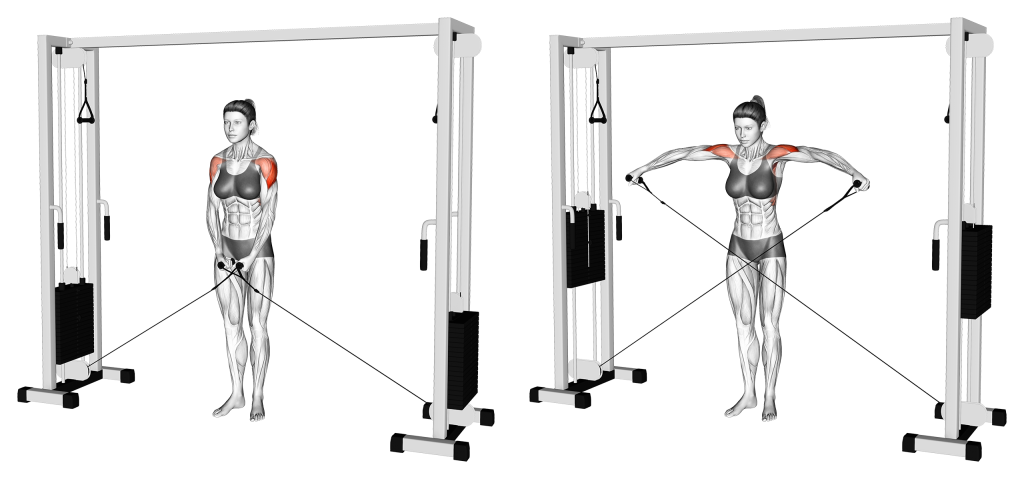
Standing upright within the center of the cable machine, the lifter will grip both handles in their hands as they set their shoulders in a neutral rotation.
Keeping the arms straight, the lifter will then draw the handles upwards and out to the sides, squeezing their deltoids as they do so.
Once the upper arms are parallel with the shoulders, the apex of the repetition has been reached.
To complete the repetition, the lifter will simply reverse the motion in a slow and controlled manner.
5. Cable Front Raises
For an isolation exercise that places a particular emphasis on the anterior deltoids, the cable front raise is the perfect first choice.

Cable front raises are mechanically similar to the cable lateral raise - only with the angle of resistance set to the front of the torso, and often with the use of a bar attachment for greater bilateral muscular recruitment.
Muscles Worked
Cable front raises are an isolation exercise, and solely target the deltoids. In particular, it is the anterior head that is worked the most.
Benefits
Cable front raises are excellent for building mass and strength in the anterior deltoids. This can create improvements in seemingly unrelated push exercises that work the same muscles, such as the bench press or the push-up.
In addition, the cable front raise is the perfect accessory to other cable shoulder exercises that emphasize the posterior deltoids - such as the face pull or upright row.
How-to:
To perform a repetition of cable front raises, the cable pulley should be set close to the ground, with a bar or pair of single-grip handles attached as well.
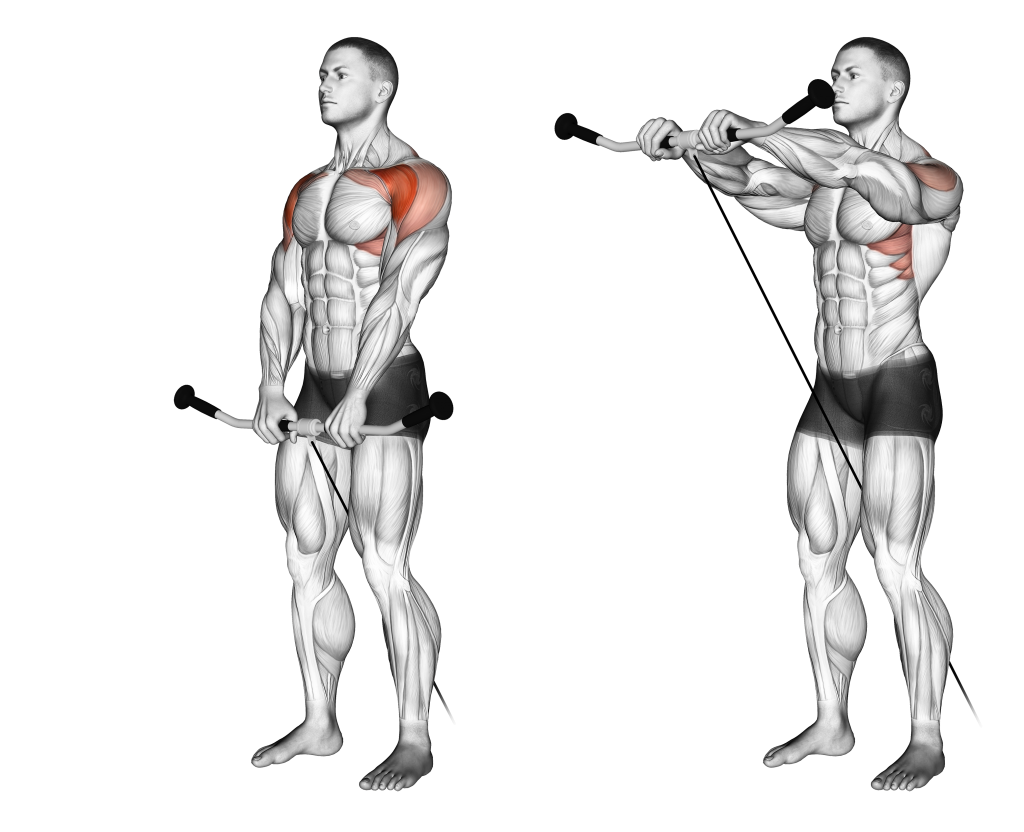
Standing facing the cable pulley, the lifter will grip the handle at their front, keeping the shoulders in a neutral rotation and the chest upright.
Once in the appropriate stance, the lifter will contract their deltoids and raise their hands upwards, keeping the arms straight as they do so.
When the arms are approximately parallel with the shoulders, the lifter will then reverse the motion and low their hands back down - thereby completing the repetition.
6. Cable Rear Delt Flyes
A compound movement similar to the face pull - the cable rear delt fly can be considered a pulling exercise in its own right, as it targets many of the upper back muscles alongside the posterior deltoid head.
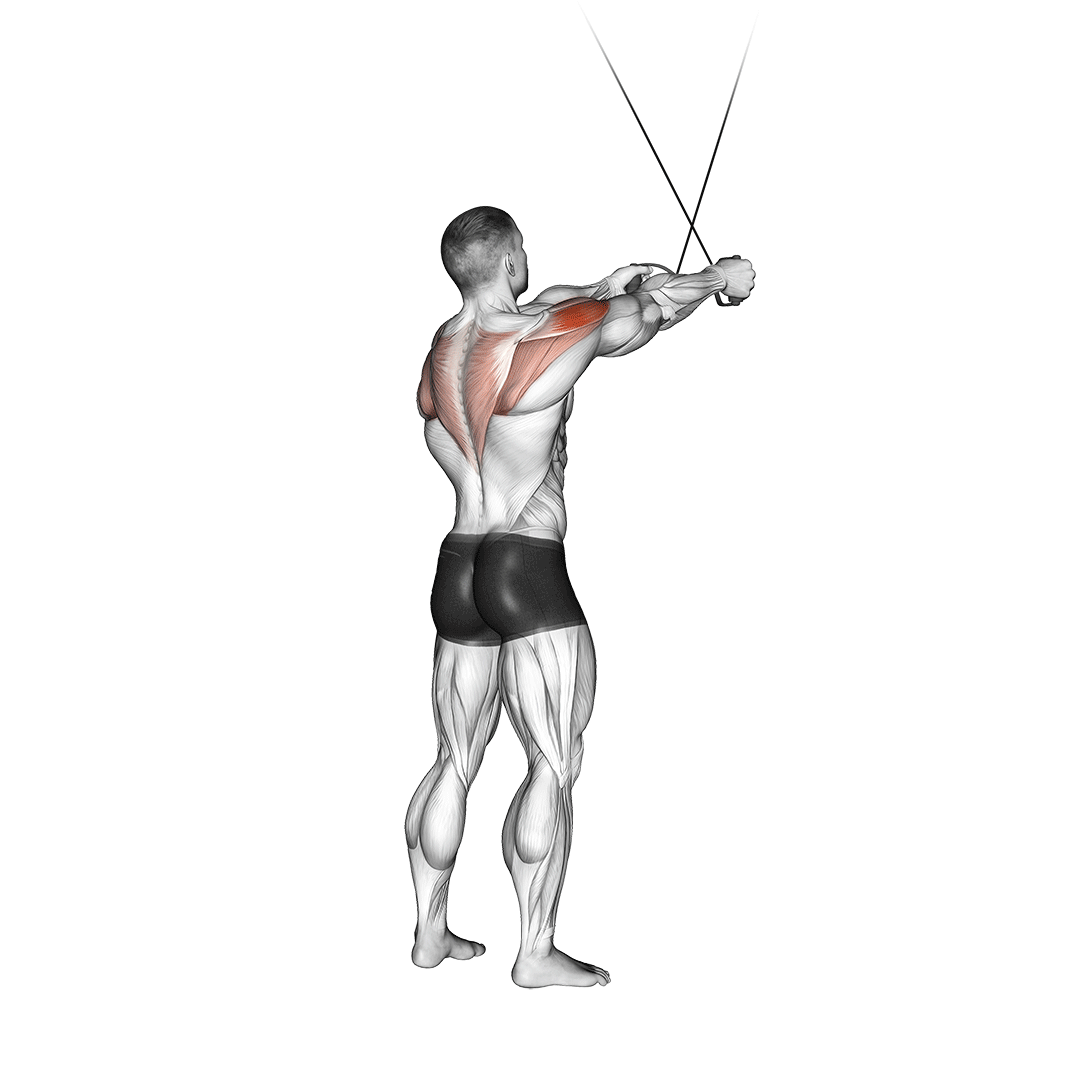
Unlike face pulls, cable rear delt flys keep the arms relatively straight and will not involve the elbow flexor muscles - instead placing greater emphasis on the posterior deltoids and the upper back.
Muscles Worked
Cable rear delt flyes work the posterior deltoid head alongside the infraspinatus, the teres minor, and the trapezius.
Benefits
Like other exercises of a similar nature, the cable rear delt fly is excellent for strengthening the entirety of the shoulders, as well as improving upper back posture.
Furthermore, the cable rear delt fly can improve the lifter’s ability to perform other seemingly unrelated exercises, like the bent-over row or lat pulldown.
How-to:
To perform a repetition of the cable rear delt fly, the lifter should set both cable pulleys at approximately shoulder-height as they stand facing the machine.
A pair of single-hand attachments should be used as well.
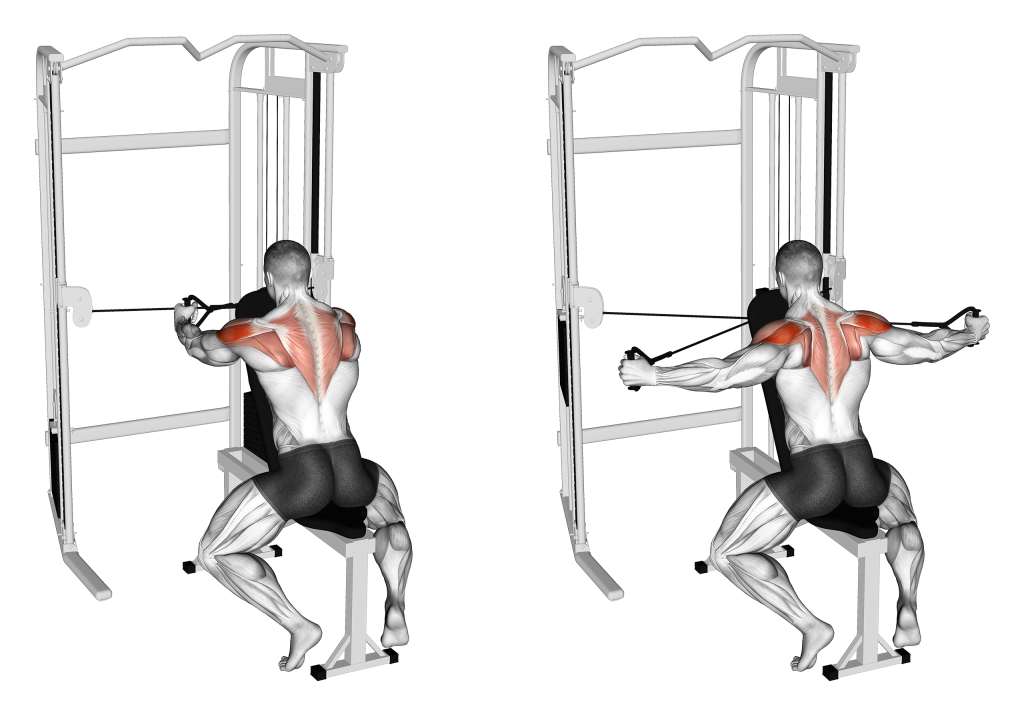
With the machine adjusted as needed, the lifter may begin the exercise by squeezing their deltoids and drawing their arms out to the sides, keeping the elbows straight as they do so. The shoulderblades should follow along with this movement, retracting as the arms move backwards.
Once the upper arms are nearly parallel to the sides of the torso, the lifter will reverse the motion and slowly allow the cable’s tension to pull their arms back around - thereby completing the repetition.
Sample Cable Deltoid Workout
The following cable deltoid workouts can be used as a shoulder-centric workout session, or otherwise integrated into an already pre-existing workout plan.
It is meant to be structured in an alternating fashion, meaning “Workout A” will be performed separately from “Workout B”, preferably with a day of rest in-between.
Workout A:
Cable Overhead Press - 3 Sets X 6 Repetitions
Cable Lateral Raise - 2 Sets X 12 Repetitions
Cable Front Raise - 2 Sets X 12 Repetitions
Workout B:
Cable Upright Row - 3 Sets X 6-8 Repetitions
Cable Face Pulls - 3 Sets X 8 Repetitions
Cable Rear Delt Flys - 2 Sets X 12 Repetitions
Frequently Asked Questions (FAQ)
Do Cable Pulldowns Work the Shoulders?
Not necessarily.
While cable pulldowns do actually target the posterior deltoid head, it is not in a significant enough fashion to result in any large scale muscular growth.
For a more effective cable shoulder workout, try out the face pull and cable overhead press.
Are Cable Exercises Enough for the Shoulders?
In truth, cable exercises suffer from a few drawbacks that make them ineffective as the sole source of shoulder training in a program.
The most important of these drawbacks is the fact that they are less effective at targeting stabilizer muscles - of which is often the entire role of the deltoids in most exercises.
We advise combining both free weight and cable shoulder exercises for a more comprehensive workout.
How Do You Target All Shoulder Muscles?
Few exercises target all three shoulder muscles in equal measure, but a few good examples are the cable overhead press and the Arnold press - both of which work the deltoids from multiple angles, allowing for a full recruitment of the muscle.
In Conclusion
Although we’ve listed the best cable machine deltoid exercises in this article, keep in mind that we haven’t listed all cable shoulder exercises. In addition, these aforementioned exercises have many variations to pick from.
If you haven’t found the right exercise for your needs here, then it’s a good idea to try a few variations that might better fit the bill.
And as always - if you’re sticking to cable machine exercises because you suspect an injury, remember to seek out medical advice prior to engaging in resistance training.
References
1. Campbell, Adam., Men's Health Magazi, Editors of. The Men's Health Big Book of Exercises: Four Weeks to a Leaner, Stronger, More Muscular You!. United States: Harmony/Rodale, 2016. ISBN: 1623368413, 978-1623368418
2. Signorile, Joseph F et al. “Differences in Muscle Activation and Kinematics Between Cable-Based and Selectorized Weight Training.” Journal of strength and conditioning research vol. 31,2 (2017): 313-322. doi:10.1519/JSC.0000000000001493
